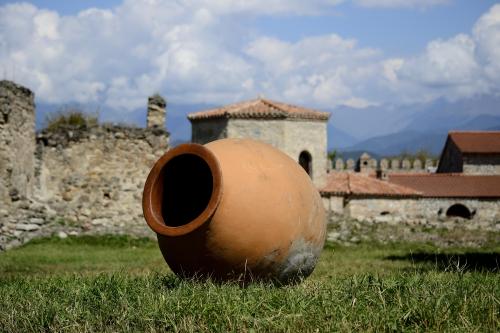
By Michael Fridjhon
Wine produced in mechanised wineries is always going to be different from the rustic, but honestly made, craft wine from an almost forgotten valley in the south of Italy, writes Michael Fridjhon
WINE is everything from an industrial beverage, a cultural artefact, a work of creative genius and an object of artisanal craft. Not unsurprisingly, it cannot be all these things at the same time.
What is produced in highly mechanised wineries from grapes sourced across a number of appellations is always going to be different from the rustic, but honestly made, craft wine from an almost forgotten valley in the south of Italy. The finely honed and brilliantly calculated masterpiece from a single site within a Grand Cru Burgundy appellation has little in common with a Georgian wine made from saperavi grapes and fermented in clay qvevri.
The idea that there could be a one-size-fits-all regulatory environment around wine production is the kind of fantasy that only bureaucrats could conceive. The Georgians used to bury the fruit from the harvest in clay receptacles and leave it underground through the long cold winter, excavating the fermented juice the following spring. Even today some of the elements of this ancient form of winemaking are still applied by the descendants of the tribesmen who stumbled across the early art of winemaking.
It is simply not realistic to expect that the legislation in place today and which has largely been developed around large-scale industrial winemaking can accommodate traditional vinification methods.
In the days before massive commercial winemaking, regulations in the established producing regions were based on what seemed fair and reasonable to the community. The French prohibition on irrigation recognised that without restrictions, growers would increase yields at the expense of quality.
The same consideration prohibits the addition to water to the grape must, or to the finished wine. (Curiously, California now authorises "re-hydration" at the crush, arguing that this is nothing more than replacing what global warming has taken out of the grapes)
But adding water is not necessarily a bad thing, providing this is fully disclosed. Right now an astonishing amount of high-volume branded wine is sold in SA with declared alcohols which are simply too low to be believable.
When the ripeness levels suggest that the alcoholic content should be at least 14% and the strength is a mere 12.5%, the only credible explanation is that some of the contents are from the reservoir and not the vineyard.
The basic quality of the wine has not been adversely affected by this illegal sleight of hand — in fact the lower alcohol levels have probably improved the mouth-feel. However, it’s near impossible in SA to make wines with the taste of fully ripened fruit at 12.5% alcohol unless you’ve used expensive alcohol removal equipment (unlikely for cheap wine) or you’ve topped the tank with water. This must be obvious to the authorities.
There are two issues here: one is a regulation which only serves the consumer interest if it stops the production of an inferior beverage; the other is the illicit benefit enjoyed by the producer who has downsized the product without declaring the deceit.
Perhaps it’s time the authorities recognised that much of what is permitted (and quite a lot of what is presently banned) is only appropriate for certain kinds of wine. Imposing an obligation to declare what has been done would remove the deceit and leave it to consumers to decide.
I would have no problem knowing that water has been added to a wine which has been fermented with wood chips (for oakiness) and to which grape juice concentrate has been added (so that the almost imperceptible sweetness can conceal the tannic roughness). I simply wish to be informed. Right now only the water addition is illegal.
While no one buying craft wine would accept any of these "techniques", few if any consumers purchasing a commercial brand would even care. However, everyone has a right to know, if only so that they can price the product correctly in their own minds.
© BDlive 2014






